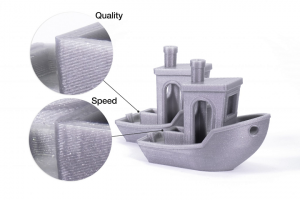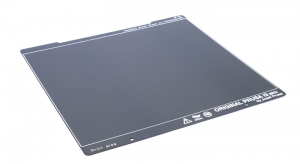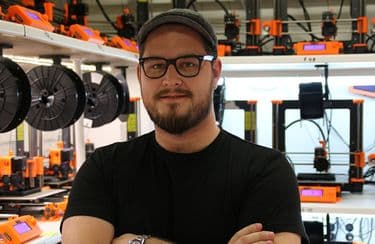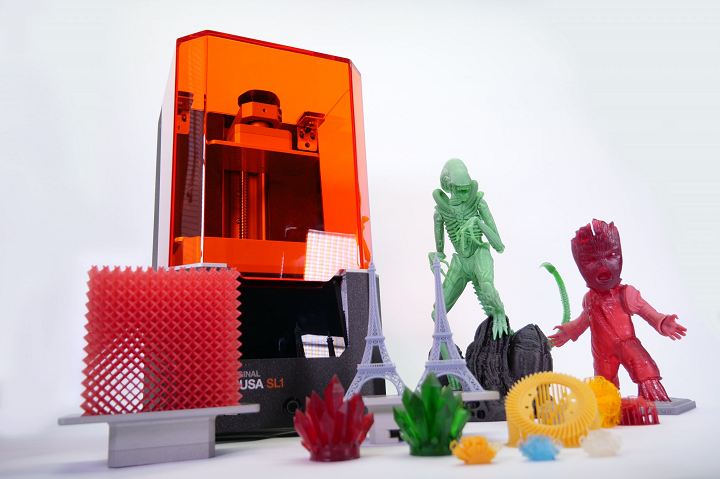It’s time for another one of Prusa‘s popular updates on its various hardware and firmware! The company makes sure its customers always know about the latest new products and improvements to its many products. The winter 2019 update is, in founder Josef Prusa’s words, “a pretty massive one,” as the company has continued to grow and reached a milestone 100,000 3D printers shipped.
“We are actually working on a short documentary how we got (literally) from a basement to this level, I am beyond excited to show you parts of the story you never saw and I’m pretty sure you will love it, too,” Prusa wrote.
Prusa conducted a product survey, and the results helped the company shape the updates for its Original Prusa MK3S and MMU2 printers. One helpful piece of constructive criticism the survey provided was that the filament sensor on the MK3S didn’t work well with some filaments, so it now features a reworked extruder with a new sensor.
“The new sensor is using the optical sensor which is triggered by a simple mechanical lever,” Prusa explained. “This sensor doesn’t care about the optical properties of the filament (it can be completely invisible) and cannot die because of mechanical wear.”

The mechanism of the re-worked filament sensor (part is black on production printers, orange is for demonstration)
Users also wanted easier servicing of the extruder assembly, so now the extruder motor and nozzle are closer to the X-axis for better prints, and you no longer have to take it apart to change the PTFE or nozzle. Additionally, the cumulative updates from the MK3’s whole life cycle are included.
The new MK3S is available from the Prusa e-shop for $749 – the same price as the MK3. You can also purchase an upgrade kit for the MK3 to the MK3S, and for the MK2.5 to the MK2.5S. The company is no longer accepting orders for the Original Prusa i3 MK2S kit and assembled printer, but does have all replacements in stock for long-term support.
 The MK3 and MK3S also have new print profiles, which users can get through the Slic3r PE 1.41.3 or newer, found in Prusa’s updated drivers. There’s now a 70μm profile – perfect for printing miniatures – and both the 150μm Optimal and 200μm profiles were split into Quality and Speed versions.
The MK3 and MK3S also have new print profiles, which users can get through the Slic3r PE 1.41.3 or newer, found in Prusa’s updated drivers. There’s now a 70μm profile – perfect for printing miniatures – and both the 150μm Optimal and 200μm profiles were split into Quality and Speed versions.
“While the MK3 results in the survey were literally amazing, customer’s feedback to MMU2 wasn’t what we imagined. Although many of you print with five filaments without any hassle, there are users facing several issues with multi-material printing – usually related to reloading the filament and secondly from the filament getting tangled as the MMU2 is unloading filament from the five spools,” Prusa wrote.
“Before I even start about MMU2S, I have to tell you, that every current owner of MMU2 will be getting the upgrade to the MMU2S (self-printed parts for the extruder upgrade) for free no matter where in the world you are.”
While Prusa was redesigning the extruder for the MK3S, the company wanted to also solve the MMU2 reloading problems. So with the new mod, the filament sensor actually detects when the filament pushes Bondtech gears apart and the idler doors open a little. Prusa spent two months testing the MMU2S, printing nearly 480 test blocks to test the frequent switching of five filaments, and over 93% were completed successfully.

Prusa printed two types of blocks – one took 19 hours to print (607 filament changes), the other 70 hours (3,520 filament changes)
“To summarize everything, with MMU2S you will get the new MK3S/MK2.5S extruder parts (with new filament sensor) and the new filament buffer,” Prusa wrote.
Prusa also released new firmware builds with support for MK3 / MK2.5( 3.5.2) and MK3S / MK2.5S (3.5.3), including a new way to control the power of the heatbed so the PSU clicking noise is decreased.
 The company has shipped over 10,000 textured sheets, which are notoriously hard to manufacture. So Prusa built its own testing lab to inspect the entire process, and after making some improvements, the sheets are now specially treated to prevent rust even in extreme humidity.
The company has shipped over 10,000 textured sheets, which are notoriously hard to manufacture. So Prusa built its own testing lab to inspect the entire process, and after making some improvements, the sheets are now specially treated to prevent rust even in extreme humidity.
Internal and external beta testing of the company’s Original Prusa SL1 resin 3D printer provided great results, and the system was officially released in September. After fixing some hardware issues, Prusa turned its focus to improving the calibration process, user experience, and automatic supports in Slic3r PE. Additionally, over 100 types of resin have their own profiles in Slic3r PE, and as it’s an open source printer, people can “use pretty much any 405nm resin.”
Speaking of Slic3r PE, the team continues to grow, and Prusa has a goal of developing the best slicer for every 3D printer, and not just its Original Prusas. So far, the company is doing pretty well, as Slic3r PE is free, receives regular new features and bug fixes, and is improved based on user feedback.
Finally, in terms of Prusament, the company continues to work on increasing its production capacity for the popular filament, and Prusa explained that “our goal is to achieve a non-stop production with fully robotic operators.”
Subscribe to Our Email Newsletter
Stay up-to-date on all the latest news from the 3D printing industry and receive information and offers from third party vendors.
You May Also Like
Profiling a Construction 3D Printing Pioneer: US Army Corps of Engineers’ Megan Kreiger
The world of construction 3D printing is still so new that the true experts can probably be counted on two hands. Among them is Megan Kreiger, Portfolio Manager of Additive...
US Army Corps of Engineers Taps Lincoln Electric & Eaton for Largest 3D Printed US Civil Works Part
The Soo Locks sit on the US-Canadian border, enabling maritime travel between Lake Superior and Lake Huron, from which ships can reach the rest of the Great Lakes. Crafts carrying...
Construction 3D Printing CEO Reflects on Being Female in Construction
Natalie Wadley, CEO of ChangeMaker3D, could hear the words of her daughter sitting next to her resounding in her head. “Mum, MUM, you’ve won!” Wadley had just won the prestigious...
1Print to Commercialize 3D Printed Coastal Resilience Solutions
1Print, a company that specializes in deploying additive construction (AC) for infrastructure projects, has entered an agreement with the University of Miami (UM) to accelerate commercialization of the SEAHIVE shoreline...
































